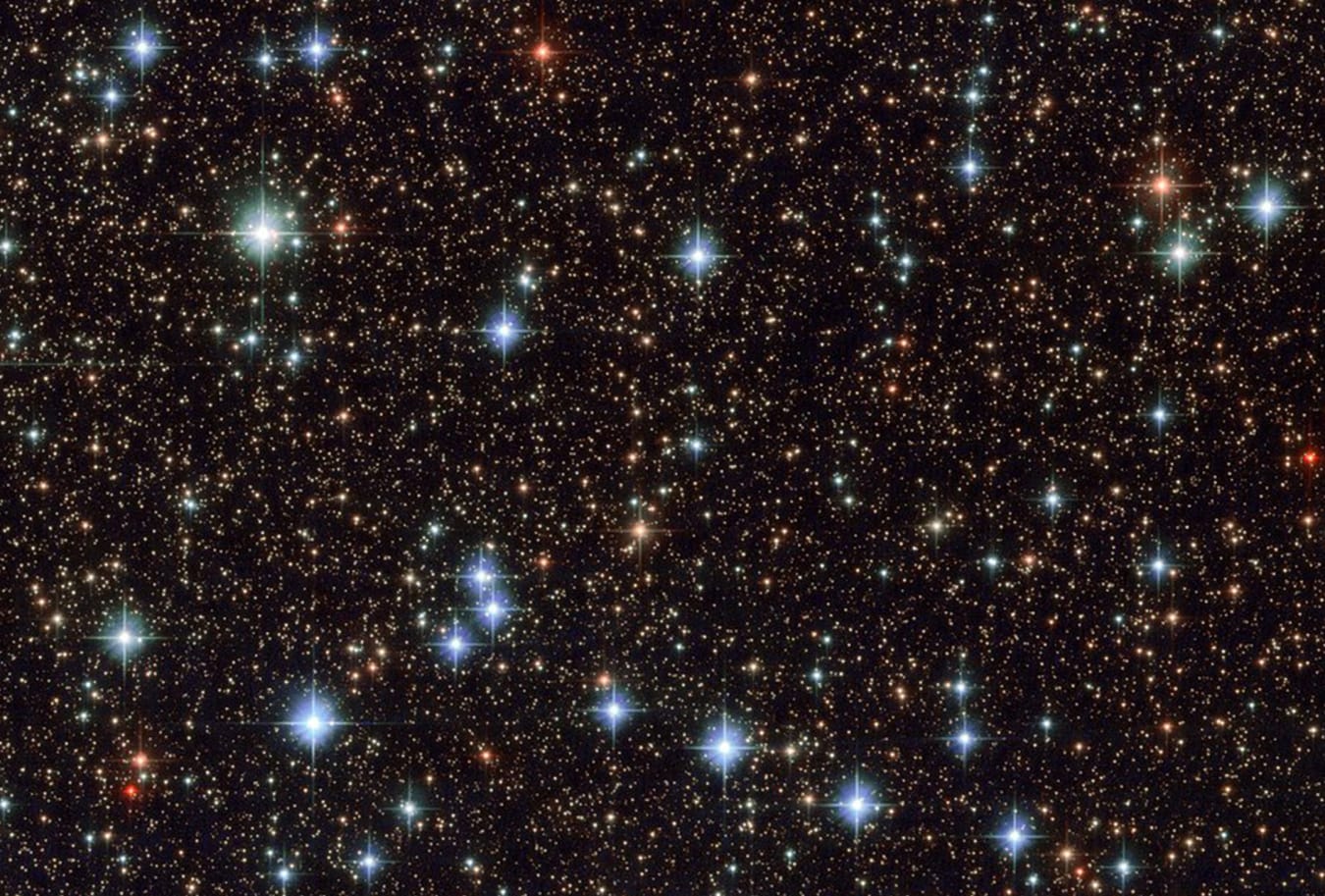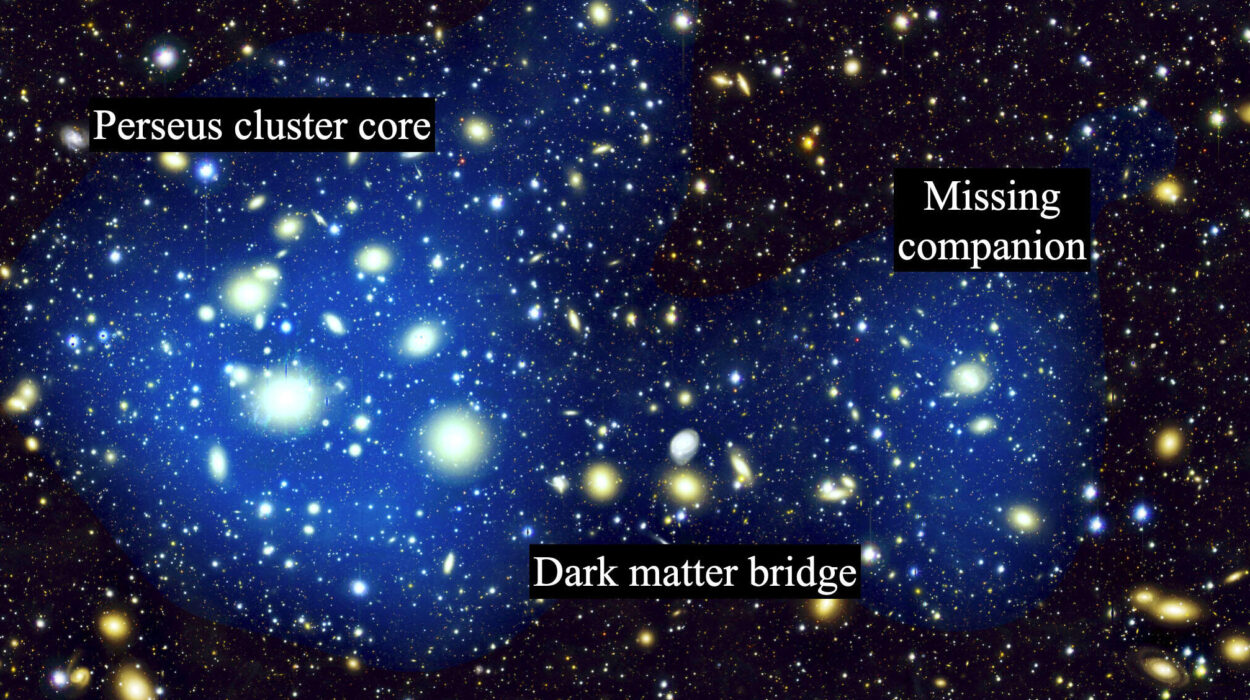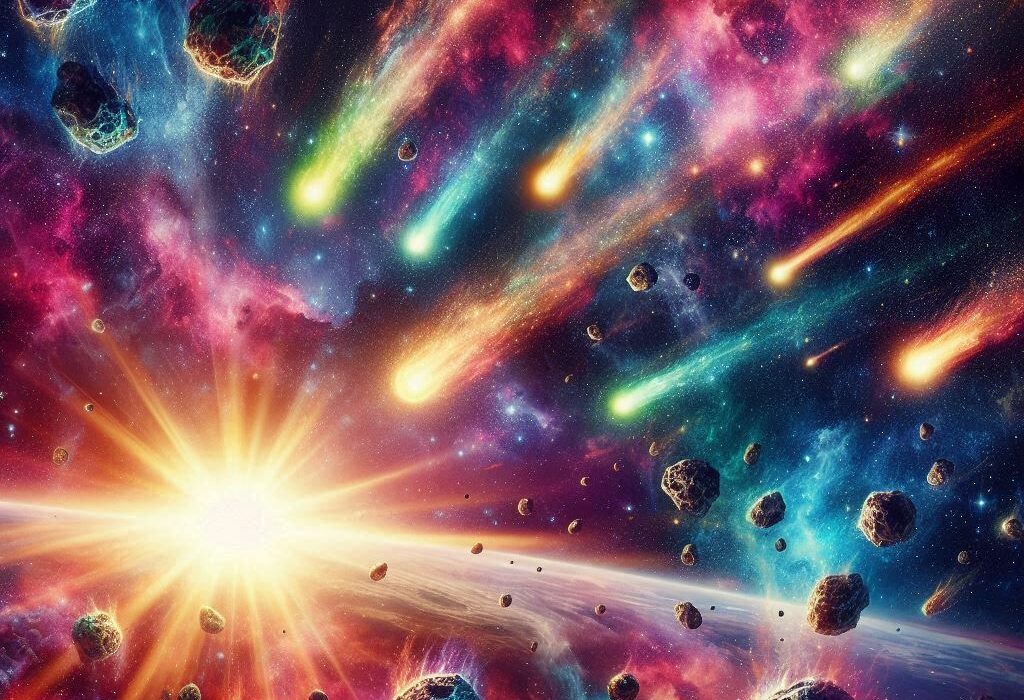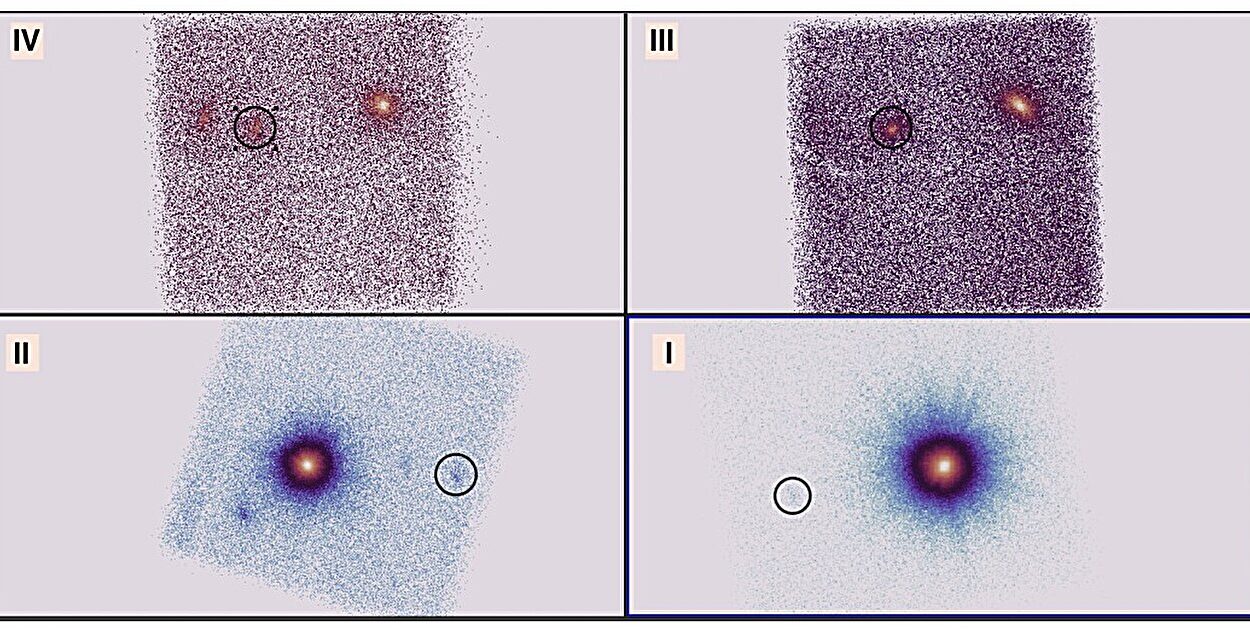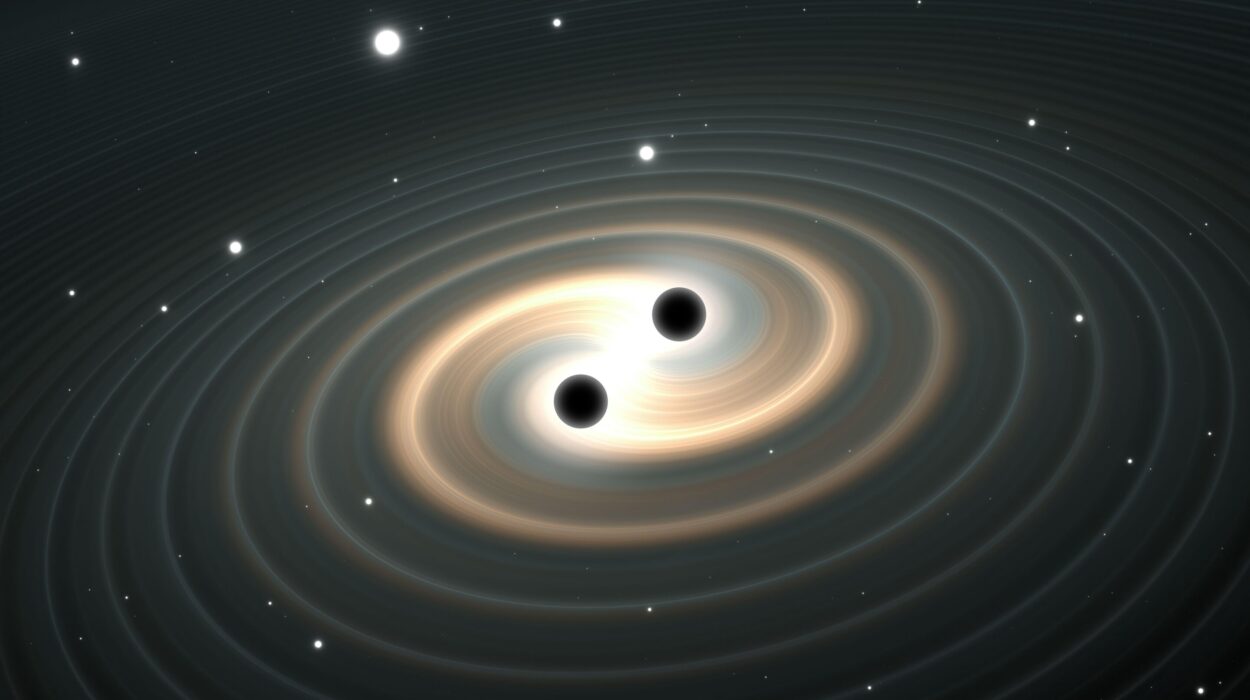Before time could tick and before space could stretch, there was nothing—no stars, no atoms, not even emptiness. It wasn’t a void because even a void requires a space to be empty in. This “nothing” was more fundamental than the absence of things—it was the absence of absence itself. Then, from this prelude of infinite stillness, something astonishing happened.
In a fraction of a second too small for language to grasp, the universe was born. Not with a gentle murmur, but with a cataclysmic release of energy that would one day become galaxies, planets, oceans, and the breath in your lungs. This was the Big Bang—not an explosion in space, but the expansion of space itself. In the most literal sense, it was the beginning of everything.
There was no center from which it all erupted. Every point in the universe began expanding away from every other point, carrying with it the seeds of everything that would ever be. In this moment, time itself began to move. The cosmic clock started ticking.
The First Flickers of Light
The first moments of our universe were chaos in its rawest form. Temperatures soared to trillions of degrees. Quarks and gluons roamed freely, like particles in a frantic dance without rhythm. Forces that today we consider separate—gravity, electromagnetism, the strong and weak nuclear forces—were once unified in a single, indistinguishable energy.
As the universe cooled, structure began to emerge from the turbulence. Quarks combined into protons and neutrons, held together by the newly distinct strong force. Within minutes, the first atomic nuclei formed—mainly hydrogen and helium. The cosmos was still too hot for full atoms, but the building blocks of matter were in place.
Yet the universe remained dark.
For nearly 380,000 years, photons—the particles of light—could not travel freely. They scattered endlessly, trapped in a dense, hot fog of charged particles. But as expansion continued and temperatures dropped, electrons and nuclei joined to form neutral atoms. Suddenly, light was free to move. This moment, known as “recombination,” gave us the cosmic microwave background—a faint, ancient afterglow still visible in every direction, the whisper of creation itself.
The Age of Darkness and First Stars
Despite the newfound freedom of light, the universe entered a long cosmic night. Hydrogen and helium atoms floated in vast emptiness. Gravity, ever patient, began its silent work, tugging gas together into denser and denser clumps. For millions of years, nothing stirred but the pull of gravity shaping structure in the deep.
Then, the darkness cracked.
Under the immense pressure of its own gravity, a dense ball of hydrogen ignited, fusing atoms together in a blaze of light. The first star was born. We don’t know its name or even its exact place, but its light marked a new epoch. The universe had made fire.
These first stars, called Population III stars, were unlike anything we see today. Massive, hot, short-lived, they lived fast and died young. Their nuclear furnaces forged elements heavier than hydrogen and helium—carbon, oxygen, nitrogen, iron—scattering them into space when they exploded as supernovae. Each death enriched the cosmos, preparing the way for more complex stars, and eventually, planets.
The universe was no longer a silent ocean of hydrogen. It had voices now—stars singing in ultraviolet and gamma rays, the first whispers of complexity.
The Rise of Galaxies and Cosmic Architecture
As the stars multiplied, gravity became the sculptor of the cosmos, gathering them into vast islands of light—galaxies. These weren’t scattered randomly. Over billions of years, the universe formed a web-like structure—a cosmic web—where matter streamed along filaments and clumped at nodes, like dew collecting on a spider’s net.
Galaxies swirled into spirals, crashed into one another, and merged. In their hearts, black holes grew—some millions or billions of times the mass of the Sun. These galactic cores became engines, pulling in matter and spewing out jets of radiation across light-years. They were violent, beautiful, and essential.
Among these galaxies, one rather average spiral spun quietly in the outer arms of a cluster, roughly 13.5 billion years after the Big Bang. Its name would one day be the Milky Way. Within its rotating disk, clouds of gas condensed into stars, some of which lived quietly, others in drama and flare. Among these stars, in a suburban corner of a spiral arm, a special solar system began to form.
The Sun and the Planets Take Shape
About 4.6 billion years ago, a cloud of dust and gas in the Milky Way collapsed under its own gravity. At the center, nuclear fusion ignited—a new star was born. Around it, a swirling disk of matter coalesced into rocks, icy bodies, and proto-planets.
From the leftover bits of earlier stars, this new system—our solar system—took shape. The inner planets formed from metal and rock, while gas giants like Jupiter and Saturn gathered thick atmospheres of hydrogen and helium. Comets and asteroids roamed the outskirts.
On the third planet from the sun, conditions were just right for something extraordinary. Liquid water pooled on the surface. The atmosphere stabilized. Lightning danced in the sky. And in the chaos of chemicals and energy, something stirred.
Life: The Universe Wakes Up
The origin of life on Earth remains one of science’s most tantalizing mysteries. But at some point—perhaps in a warm pond, a deep-sea vent, or a clay-rich coastline—simple molecules assembled into something that could replicate, metabolize, evolve.
Life had begun.
For billions of years, single-celled organisms dominated the Earth. They transformed the planet, exhaling oxygen and creating the atmosphere we breathe today. Over time, evolution painted complexity onto this canvas: multicellular organisms, plants, animals, neural networks.
Then, around 300,000 years ago, a species of ape began to walk upright, shape tools, control fire. Their brains grew, not just in size but in abstraction. They began to wonder, to question, to tell stories by firelight. From their curiosity came culture, language, mathematics, art. They called themselves Homo sapiens—the wise ones.
We were not the beginning of time, but we were the first to ask what time truly was.
The Stars Become Our Teachers
As humans spread across the Earth, they looked upward and saw their past without knowing it. The stars became calendars, gods, and guides. The sky was a mirror in which we saw ourselves. In every civilization—from Mesopotamia to the Maya, from the Nile to the Indus—the heavens were sacred.
Over millennia, those dots of light were no longer just decoration. With eyes sharper and minds deeper, we learned they were suns like our own, distant and burning. We learned of their deaths and births, their motions and masses. Telescopes replaced naked eyes. Mathematics replaced myth. But awe remained.
Then came revolution.
In the early 20th century, a man with wild hair and a head full of dreams reimagined gravity as the warping of space and time. Albert Einstein‘s theory of General Relativity told us the universe was not static—it could stretch, curve, even ripple. Observations followed. In 1929, Edwin Hubble discovered that galaxies were fleeing from us in all directions. The universe was expanding.
This was more than observation. It was a return to the beginning. If everything is moving away, then once, long ago, it must have been close together. The Big Bang wasn’t just a theory—it was a rediscovery of our birth.
The Silent March of Time
The universe continues to evolve, though we live in a tiny window of it. Galaxies continue to dance and collide. Stars are born and die every second. Black holes devour matter and grow. Dark energy—an unknown force pushing the universe apart—has taken hold, accelerating cosmic expansion.
In the far future, stars will exhaust their fuel. Galaxies will dim. Black holes will dominate. And perhaps, trillions of years from now, the universe will become cold and dark—a quiet sea of particles, stretched across infinite silence.
Or maybe not. Maybe a new cycle will begin. Maybe our universe is just one of many—a bubble in a greater cosmic foam. Perhaps time will bend back on itself, or give birth to something new. We don’t know. That’s the beauty.
We Are the Universe Knowing Itself
From the birth of time to the rise of thought, the cosmic timeline is not just a sequence of events—it is a story of transformation. Hydrogen becomes sunlight. Atoms become cells. Dust becomes minds that can reflect on their own origin.
You are a piece of this timeline. Every cell in your body contains atoms forged in ancient stars. The iron in your blood, the calcium in your bones, the carbon in your DNA—these are relics of supernovae. The universe is not something outside of you. You are it, contemplating itself.
And perhaps that is the most astonishing fact of all. Out of fire and chaos, something emerged that could feel. That could ask, “Where did we come from?” That could write these words and read them, across space and time.
The Story Continues
As we build telescopes that peer deeper into the past, as we send probes beyond our solar system, as we create machines that think and dream, the timeline grows.
There is still so much we do not know—what dark matter is, what happened before the Big Bang, whether life exists elsewhere. But our journey has only just begun.
The universe is not finished. It is still unfolding, and we are threads in its vast tapestry.
So next time you look up at the stars, remember: you are not looking into the past.
You are looking into your origin.
And the timeline continues—through you, through me, through all of us—forever reaching toward the infinite.
